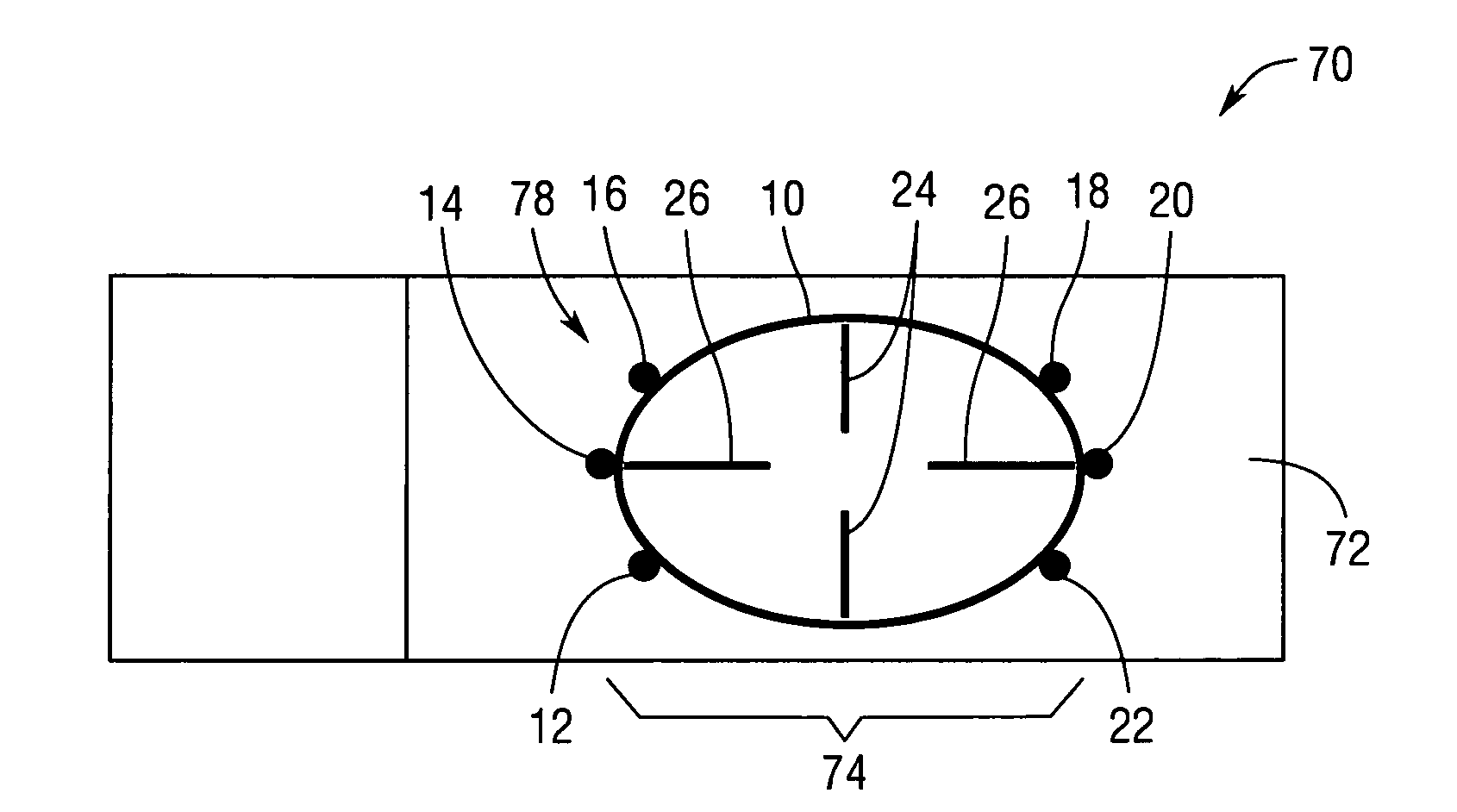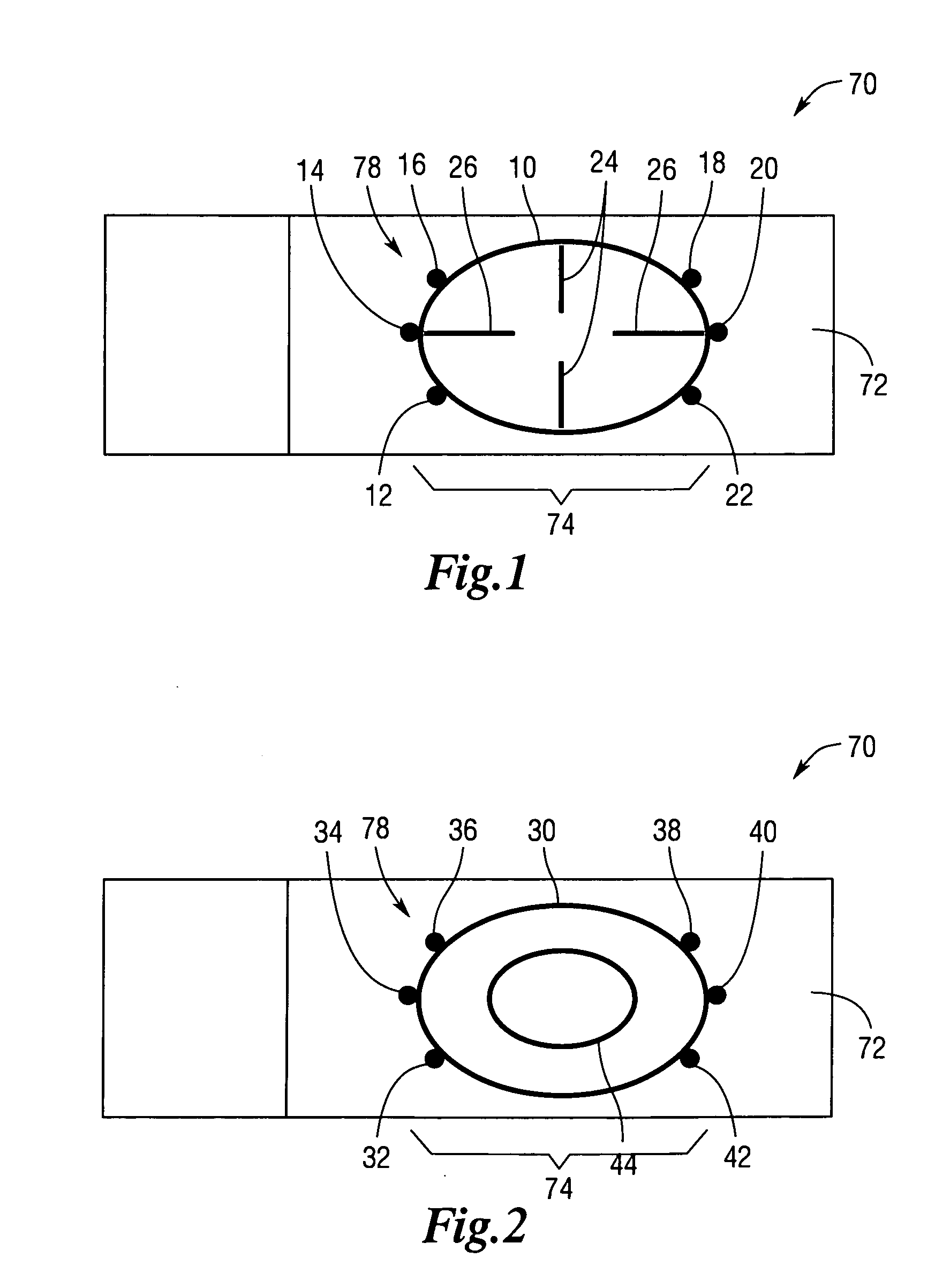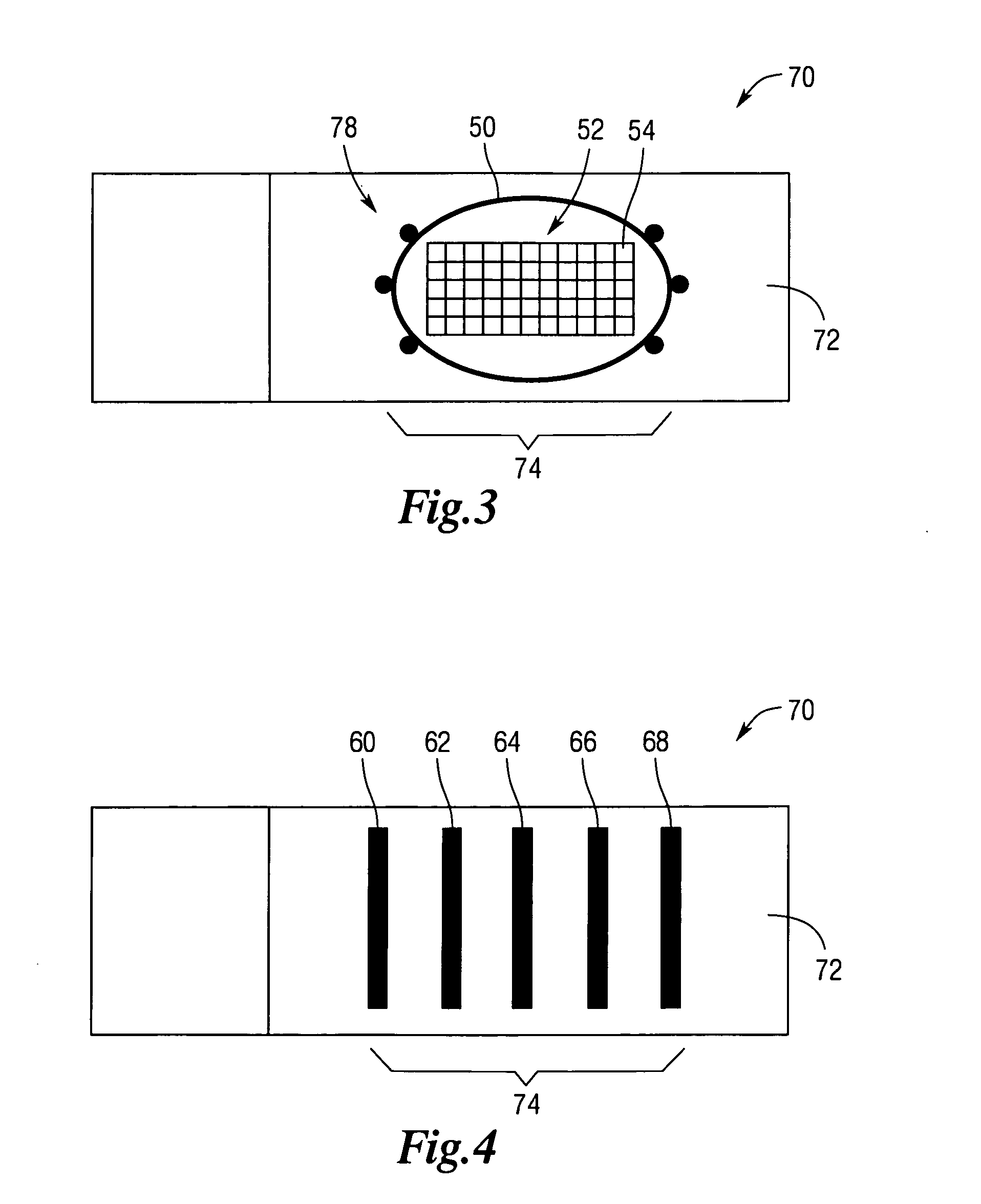Fluorescent microscope slide
a fluorescent microscope and slide technology, applied in the field of fluorescent microscope slides, can solve the problems of low sensitivities of bright field microscopy, the risk of active tb infection of persons with hiv, and the global health problem of tuberculosis, etc., to achieve accurate identification of the field of view
- Summary
- Abstract
- Description
- Claims
- Application Information
AI Technical Summary
Benefits of technology
Problems solved by technology
Method used
Image
Examples
examples
[0038]The device of the present teachings enables rapid and accurate detection of the presence of components of interest (e.g. acid fast bacilli) in a sample using fluoroscopic microscopy. The fluorescent microscope substrate 70 features a specimen receptacle (e.g. a microscope slide or cover) 72 comprising markings 74 on a surface of the receptacle that: fluoresce, demarcate a sample specimen area 78, identify examination start areas, and demarcate examination distances.
[0039]Stated otherwise, the fluorescent markings 74 define a target area 12 for a sample. In addition, fluorescent markings 74 about (i.e. proximate, adjacent to, or within) the target area 12 enable a microscopist or other user to ascertain a field of focus. Fluorescent markings 74 about the target area 12 also allow a user to identify a field of view.
[0040]Markings 74 of the fluorescent microscope slide 70 can assume any desired form including, but not limited to: lines, etchings, symbols, numbers, text, geometric...
PUM
| Property | Measurement | Unit |
|---|---|---|
| thickness | aaaaa | aaaaa |
| height | aaaaa | aaaaa |
| height | aaaaa | aaaaa |
Abstract
Description
Claims
Application Information
 Login to View More
Login to View More - R&D
- Intellectual Property
- Life Sciences
- Materials
- Tech Scout
- Unparalleled Data Quality
- Higher Quality Content
- 60% Fewer Hallucinations
Browse by: Latest US Patents, China's latest patents, Technical Efficacy Thesaurus, Application Domain, Technology Topic, Popular Technical Reports.
© 2025 PatSnap. All rights reserved.Legal|Privacy policy|Modern Slavery Act Transparency Statement|Sitemap|About US| Contact US: help@patsnap.com



